Related Research Articles
Perfume is a mixture of fragrant essential oils or aroma compounds (fragrances), fixatives and solvents, usually in liquid form, used to give the human body, animals, food, objects, and living-spaces an agreeable scent. Perfumes can be defined as substances that emit and diffuse a pleasant and fragrant odor. They consist of manmade mixtures of aromatic chemicals and essential oils. The 1939 Nobel Laureate for Chemistry, Leopold Ružička stated in 1945 that "right from the earliest days of scientific chemistry up to the present time, perfumes have substantially contributed to the development of organic chemistry as regards methods, systematic classification, and theory."

Chanel is a French luxury fashion house founded in 1910 by Coco Chanel in Paris. It is privately owned by the Wertheimer family and has been headquartered in London since 2018.

Jean Patou was a French fashion designer, and founder of the Jean Patou brand.
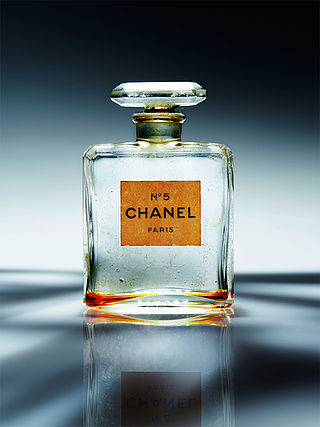
Chanel No. 5 was the first perfume launched by French couturier Gabrielle "Coco" Chanel in 1921. The scent formula for the fragrance was compounded by French-Russian chemist and perfumer Ernest Beaux. The design of its bottle has been an important part of the product's branding. Coco Chanel was the first face of the fragrance, appearing in the advertisement published by Harper's Bazaar in 1937.

Pierre Wertheimer was a French businessman, who co-founded Chanel with Coco Chanel.

Chanel No. 19 perfume was first marketed in 1971. The number 19 was chosen to commemorate Coco Chanel's birthday, 19 August. The perfume was launched a year before she died. The scent was created by Henri Robert.
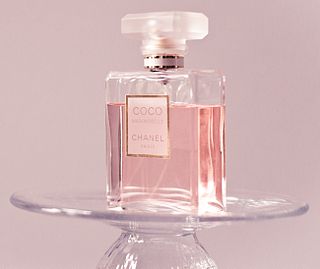
Coco Mademoiselle is a women's perfume by French fashion house Chanel, introduced in 2001 for younger consumers. The fragrance was created by Jacques Polge, the nose of Chanel from 1978 to 2015.

Ernest Beaux was a Russian-born French perfumer who is best known for creating Chanel No. 5, which is perhaps the world's most famous perfume.

Joy is a perfume created for Parisian couturier Jean Patou by perfumer Henri Alméras in 1929. It is considered to be one of the greatest fragrances created and is a landmark example of the floral genre in perfumery. It is still produced in France by Designer Parfums, Ltd., in an Eau de Parfum and Eau de Toilette version.
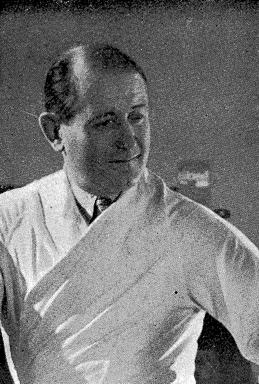
Henri Alméras was a French perfumer, author, and painter.
Henri Robert is a French perfumer and chemist, he is best known for his role as Chief Perfumer at Les Parfums Chanel from 1953 to 1978.
Light Blue is a fragrance line by Italian fashion designers Dolce & Gabbana which was launched in 2001 and has won numerous fragrance-industry awards. The men's version was released in 2007 and has also won awards, including the FiFi Awards in 2008.
Cuir de Russie is a fragrance from Parisian couturier Gabrielle "Coco" Chanel.
Bois des Îles is a fragrance produced by Parisian couturier Gabrielle "Coco" Chanel. The name is French for "Island Wood" or, more literally, "Wood of the Islands".

Truth or Dare by Madonna is a lifestyle brand by American singer Madonna. It is the second enterprise from MG Icon LLC, a joint venture between Madonna, her manager Guy Oseary and Iconix Brand Group. This is the second brand from the venture after Material Girl, which is a fashion line designed by Madonna and her daughter Lourdes and launched in 2010. Initially the line will be launched with handbags, footwear, accessories, intimates and fragrances.
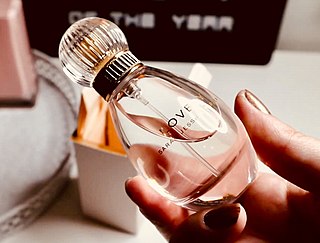
Lovely is a 2005 perfume released by Sarah Jessica Parker. Parker’s first fragrance, Lovely is a light floral musk based on a blend Parker had made for herself. The perfume’s formal development was the subject of a 2008 book by New York Times perfume critic Chandler Burr called The Perfect Scent: A Year Behind the Scenes of the Perfume Industry in Paris and New York.
Poison is a perfume for women introduced by Parfums Christian Dior in 1985. The popularity of the scent made it become a brand in its own right and resulted in the subsequent release of five flanker fragrances: Tendre Poison, Hypnotic Poison, Pure Poison, Midnight Poison, and Poison Girl.
Chanel Chance is a line of fragrances for women from Chanel that was introduced in September 2002. It was created by Jacques Polge, who has created every Chanel fragrance launched since 1978, including Coco Mademoiselle, Allure, Bleu de Chanel and Chanel No.5 Eau Premiere.

Un Jardin sur le Nil is a 2005 perfume created by perfumer Jean-Claude Ellena for Hermès. A unisex eau de toilette, the scent was inspired by the green mangoes Ellena smelled while walking through a grove of mangoes during a visit to the Nile.
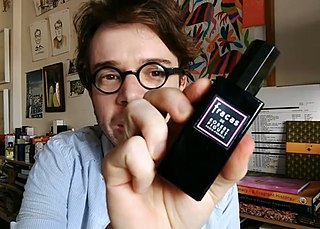
Fracas is a 1948 perfume created by French perfumer Germaine Cellier for French fashion designer Robert Piguet. It is based on the scent of tuberose, a pungent small white flower. A landmark fragrance, it has spawned many imitators and as of 2021 has been in production for more than 70 years later.
References
- ↑ Burr, Chandler. "For old-line Chanel, audacious new edge - A 10-fragrance set rocks the boat of the upscale perfumer's exclusive tradition," The Orlando Sentinel, March 23, 2007.
- ↑ A Critic at Large: A Case of Melancholia: The New Yorker
- ↑ No. 22 by Chanel (1922)
- ↑ King, Elisabeth. "Old spice – Style," The Age (Melbourne, Australia), December 4, 2002.
- ↑ Chandler Burr Archived August 27, 2008, at the Wayback Machine
- ↑ "The Genie in Every Bottle Is Coco Chanel - New York Times". Archived from the original on 2009-09-26. Retrieved 2008-03-14.
- ↑ Washington, Roxanne. "Fragrance Finds, The (Cleveland, OH) Plain Dealer, September 19, 1996, p. 3E.